
|
It brightened up to 3.7 mag and became a naked eye comet in mid January (Jan. 13, Marek Biely). It is bright as 5.7 mag still now (Mar. 12, Carlos Labordena). It kept brightening even after the perihelion passage. However, it will be getting fainter gradually after this. In the Northern Hemisphere, it keeps observable in good condition after this until the comet fades out. It is not observable in the Southern Hemisphere.
Date(TT) R.A. (2000) Decl. Delta r Elong. m1 Best Time(A, h)
Mar. 14 1 25.17 59 29.3 1.523 1.442 66 6.1 19:45 (145,-28)
Mar. 21 1 23.72 61 53.1 1.628 1.490 63 6.4 19:35 (147,-31)
|

|
Now it is bright as 10.5 mag (Mar. 1, Marco Goiato). In the Southern Hemisphere, it will be getting higher gradually after this. In the Northern Hemisphere, it keeps extremely low and hard to observe until June. It will be observable in good condition after June while the comet will be fading gradually.
Date(TT) R.A. (2000) Decl. Delta r Elong. m1 Best Time(A, h)
Mar. 14 20 36.53 -20 39.6 1.860 1.383 46 9.3 4:32 (277, 28)
Mar. 21 21 2.09 -19 14.7 1.830 1.370 47 9.1 4:38 (274, 29)
|

|
The spacecraft observed it brightened rapidly from 9 mag up to 2 mag when passing near by the sun. The nucleus has been already disintegrated, but the remnant is visible bright. Now it is 7.8 mag (Mar. 7, Juan Jose Gonzalez). In the Northern Hemisphere, it will be observable and getting higher rapidly. It is not observable in the Southern Hemisphere.
Date(TT) R.A. (2000) Decl. Delta r Elong. m1 Best Time(A, h)
Mar. 14 1 33.11 37 48.9 1.031 0.843 49 10.5 19:45 (126,-17)
Mar. 21 2 20.39 44 16.8 1.198 1.017 54 11.4 19:35 (134,-15)
|
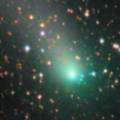
|
The brightness evolution has slowed down before the perihelion passage, and it faded down to 11.6 mag in late October (Oct. 26, Todd Augustyniak). However, an outburst occured around Nov. 10-12, and it brightened by 2 mag. It is bright as 11.7 mag still now (Feb. 16, Jakub Cerny). In the Northern Hemisphere, it will be observable in excellent condition after this while the comet will be fading. It is observable in the morning low sky until early April also in the Southern Hemisphere.
Date(TT) R.A. (2000) Decl. Delta r Elong. m1 Best Time(A, h)
Mar. 14 17 45.49 33 56.2 2.168 2.372 89 11.9 4:32 (203, 17)
Mar. 21 17 34.64 38 18.0 2.147 2.443 94 12.0 4:38 (193, 15)
|
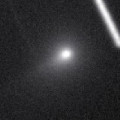
|
Bright new comet. Now it is 12 mag (Mar. 9, Rob Kaufman). It will be unobservable soon in the Southern Hemisphere. It keeps locating extremely low and hard to observe also in the Northern Hemisphere. It will be getting higher gradually after May, but the comet will be fainter than 15 mag.
Date(TT) R.A. (2000) Decl. Delta r Elong. m1 Best Time(A, h)
Mar. 14 1 4.95 4 34.6 1.525 0.737 23 12.1 19:45 ( 93, -4)
Mar. 21 1 10.46 12 34.8 1.619 0.785 21 12.5 19:35 ( 98,-11)
|
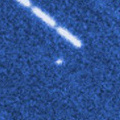
|
Now it is 15.1 mag (Feb. 1, Taras Prystavski). It will brighten up to 10.5 mag in 2015 spring. But the condition of this apparition is bad. It is already unobservable in the Northern Hemisphere. It will be unobservable in mid March also in the Southern Hemisphere. In the Northern Hemisphere, it will be observable after 2015 autumn while the comet will be fading.
Date(TT) R.A. (2000) Decl. Delta r Elong. m1 Best Time(A, h)
Mar. 14 0 56.22 -11 58.7 2.477 1.603 22 12.6 19:45 ( 78, 4)
Mar. 21 1 13.60 -9 2.5 2.456 1.563 20 12.3 19:35 ( 81, 2)
|
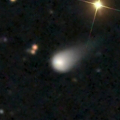
|
It brightened up to 13.6 mag until the end of 2014, brighter than originally expected (Dec. 19, Chris Wyatt). It is expected to brighten up to 4 mag from autumn to winter in 2015. Now it is not observable. In the Southern Hemisphere, it will be observable in good condition again after late March. In the Northern Hemisphere, it is hardly observable until 2015 December.
Date(TT) R.A. (2000) Decl. Delta r Elong. m1 Best Time(A, h)
Mar. 14 23 0.57 -21 56.2 4.594 3.681 20 12.5 4:32 (297, 0)
Mar. 21 23 5.30 -21 46.7 4.477 3.603 25 12.3 4:38 (293, 6)
|
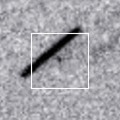
|
It will brighten up to 11 mag in spring. But the condition is bad in this apparition. In the Southern Hemisphere, it will become observable in the morning extremely low sky after late April. It will not be observable until late July in the Northern Hemisphere.
Date(TT) R.A. (2000) Decl. Delta r Elong. m1 Best Time(A, h)
Mar. 14 22 37.45 -10 13.3 2.297 1.368 15 12.8 4:32 (284, -2)
Mar. 21 23 1.14 -8 59.7 2.299 1.378 17 12.5 4:38 (282, -1)
|
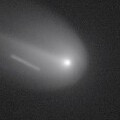
|
It brightened very rapidly in outburst up to 8.8 mag in mid December (Dec. 19, Marco Goiato). Then it faded down to 10.7 mag (Jan. 14, Chris Wyatt). However, it brightened in outburst again on Jan. 16, and brightened up to 7.0 mag (Jan. 17, Maik Meyer). Now it is 11.6 mag and diffuse (Mar. 10, J.P.Navarro Pina). In the Northern Hemisphere, it keeps high within March. In the Southern Hemisphere, it keeps locating extremely low after this.
Date(TT) R.A. (2000) Decl. Delta r Elong. m1 Best Time(A, h)
Mar. 14 2 45.29 21 6.5 1.819 1.449 52 13.3 19:45 (121, 6)
Mar. 21 3 10.10 22 56.3 1.915 1.515 51 13.9 19:35 (124, 6)
|
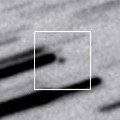
|
It passes the perihelion on Mar. 15, and brightens up to 13 mag. But it is not observable until it becomes fainter than 18 mag.
Date(TT) R.A. (2000) Decl. Delta r Elong. m1 Best Time(A, h)
Mar. 14 23 25.74 -7 34.0 0.868 0.151 5 17.3 4:32 (290,-14)
Mar. 21 23 21.95 0 3.4 1.193 0.265 9 13.3 4:38 (277,-10)
|
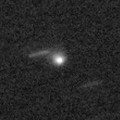
|
It will approach to the sun down to 0.3 a.u. in 2015 July, and it is expected to be bright. Now it is 15.6 mag (Jan. 13, Yasukazu Ikari). Hard to observe for a while after this. In the Southern Hemisphere, it will be observable after mid July in 2015, and keeps observable while the comet will be fading gradually. It will not be observable after this in the Northern Hemisphere.
Date(TT) R.A. (2000) Decl. Delta r Elong. m1 Best Time(A, h)
Mar. 14 23 55.52 -9 10.5 3.300 2.321 8 13.7 19:45 ( 72,-10)
Mar. 21 0 4.46 -7 32.4 3.199 2.216 7 13.5 19:35 ( 72,-13)
|
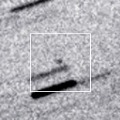
|
It was observed at 16.0 mag in December (Dec. 22, Ken-ichi Kadota). It must have brightened up to 11 mag from January to February, but no observations have been reported. In the Southern Hemisphere, it is observable in the morning sky after this while the comet will be fading. It is hardly observable in the Northern Hemisphere.
Date(TT) R.A. (2000) Decl. Delta r Elong. m1 Best Time(A, h)
Mar. 14 21 50.51 -20 19.1 2.099 1.343 30 13.5 4:32 (286, 13)
Mar. 21 22 14.68 -19 32.2 2.114 1.377 32 14.1 4:38 (284, 14)
|

|
It brightened up to 6.9 mag in autumn (Oct. 17, Marco Goiato). Now it is fading. But it is bright as 12.6 mag still now (Feb. 9, Chris Wyatt). In the Southern Hemisphere, it is getting lower and it will be unobservable temporarily in March. But it will be observable in good condition again after April. It will be observable again in mid June also in the Northern Hemisphere.
Date(TT) R.A. (2000) Decl. Delta r Elong. m1 Best Time(A, h)
Mar. 14 0 28.15 -19 43.1 3.938 3.035 21 13.6 19:45 ( 68, 3)
Mar. 21 0 31.60 -19 1.9 4.026 3.113 20 13.8 19:35 ( 66, 0)
|
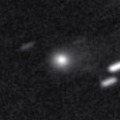
|
Now it is 14.3 mag (Mar. 1, Taras Prystavski). In 2015, it keeps 13-14 mag and will be observable in good condition for a long time.
Date(TT) R.A. (2000) Decl. Delta r Elong. m1 Best Time(A, h)
Mar. 14 18 39.91 -12 21.6 3.617 3.464 73 13.7 4:32 (249, 47)
Mar. 21 18 47.74 -11 59.3 3.524 3.460 78 13.6 4:38 (242, 51)
|

|
Now it is 15 mag (Feb. 26, Richard Miles). It is getting higher gradually in the morning sky.
Date(TT) R.A. (2000) Decl. Delta r Elong. m1 Best Time(A, h)
Mar. 14 17 51.83 -30 59.4 6.072 6.061 84 13.8 4:32 (269, 65)
Mar. 21 17 54.25 -31 5.6 5.958 6.059 91 13.7 4:38 (263, 72)
|

|
Now it is 15.5 mag (Mar. 1, Taras Prystavski). It is expected to brighten rapidly and will be observable in good condition at 13 mag from March to May.
Date(TT) R.A. (2000) Decl. Delta r Elong. m1 Best Time(A, h)
Mar. 14 16 21.03 -19 9.1 0.565 1.273 106 14.4 4:32 (200, 73)
Mar. 21 16 55.93 -19 35.3 0.529 1.242 104 14.0 4:38 (201, 74)
|

|
It brightened up to 10.6 mag from autumn to winter (Nov. 29, Seiichi Yoshida). Now it is 12.4 mag (Feb. 19, Taras Prystavski). It will be fading graudually after this. But it keeps observable for a long time until the comet fades out.
Date(TT) R.A. (2000) Decl. Delta r Elong. m1 Best Time(A, h)
Mar. 14 17 29.46 -14 31.9 1.846 2.102 90 14.3 4:32 (232, 61)
Mar. 21 17 34.98 -14 33.7 1.831 2.173 95 14.5 4:38 (220, 65)
|

|
Now it is 13.4 mag (Feb. 15, Jakub Cerny). It is fainter than originally predicted by 2 mag. In the Northern Hemisphere, it keeps observable at 14 mag in excellent condition from 2014 summer to 2015 spring. It locates somewhat low in the Southern Hemisphere.
Date(TT) R.A. (2000) Decl. Delta r Elong. m1 Best Time(A, h)
Mar. 14 11 29.32 20 37.3 1.419 2.385 162 14.3 0:06 (180, 34)
Mar. 21 11 24.09 20 35.3 1.466 2.417 157 14.4 23:29 (180, 35)
|
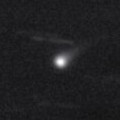
|
Brightening very rapidly. Now it is so bright as 14.6 mag and visible visually (Mar. 9, Chris Wyatt). It keeps observable at 14-15 mag in good condition from winter to spring.
Date(TT) R.A. (2000) Decl. Delta r Elong. m1 Best Time(A, h)
Mar. 14 8 46.92 10 14.5 2.698 3.500 137 14.6 21:20 (180, 45)
Mar. 21 8 45.89 10 9.0 2.756 3.490 130 14.5 20:51 (180, 45)
|
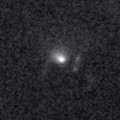
|
Now it is 15.6 mag (Jan. 19, Catalina Sky Survey). It will brighten up to 11 mag in 2015 autumn. In this apparition, it is observable until the highlight while the comet is brightening.
Date(TT) R.A. (2000) Decl. Delta r Elong. m1 Best Time(A, h)
Mar. 14 13 8.38 0 7.6 1.638 2.579 156 15.0 1:45 (180, 55)
Mar. 21 13 4.06 0 53.3 1.565 2.537 163 14.8 1:13 (180, 54)
|

|
It brightened up to 11-12 mag in 2012. It has already faded down to 16.0 mag (Feb. 14, Taras Prystavski). It keeps observable at 15 mag in good condition until 2015 summer.
Date(TT) R.A. (2000) Decl. Delta r Elong. m1 Best Time(A, h)
Mar. 14 11 31.02 -8 25.8 8.160 9.137 168 15.2 0:08 (180, 64)
Mar. 21 11 26.72 -8 1.1 8.196 9.174 168 15.2 23:31 (180, 63)
|

|
Very far object. However, outburst occured on Feb. 20, and now it brightened up to 15.3 mag (Feb. 28, Taras Prystavski). It is reported so bright visually as 11.8 mag (Mar. 11, Marco Goiato). It locates high in the Southern Hemisphere. But it locates somewhat low in the Northern Hemisphere.
Date(TT) R.A. (2000) Decl. Delta r Elong. m1 Best Time(A, h)
Mar. 14 12 15.09 -23 36.1 8.265 9.153 151 15.2 0:52 (180, 79)
Mar. 21 12 13.17 -23 24.9 8.231 9.151 156 15.2 0:22 (180, 79)
|

|
Now it is 15.3 mag (Jan. 7, Taras Prystavski). It keeps 15 mag for a long time from 2014 to 2015. It is observable in excellent condition in 2014 in the Southern Hemisphere, or in 2015 in the Northern Hemisphere. It becomes unobservable temporarily from March to May.
Date(TT) R.A. (2000) Decl. Delta r Elong. m1 Best Time(A, h)
Mar. 14 0 51.39 0 39.3 4.804 3.882 19 15.3 19:45 ( 88, -5)
Mar. 21 0 56.83 2 14.1 4.839 3.883 14 15.3 19:35 ( 87, -8)
|

|
It brightened rapidly. Now it is 16.1 mag, much brighter than origianlly predicted (Feb. 14, Taras Prystavski). It keeps 15 mag in March.
Date(TT) R.A. (2000) Decl. Delta r Elong. m1 Best Time(A, h)
Mar. 14 15 54.31 -21 56.5 0.964 1.622 111 15.4 4:30 (180, 77)
Mar. 21 16 4.61 -23 56.6 0.940 1.642 116 15.5 4:13 (180, 79)
|
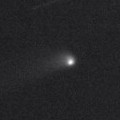
|
Now it is 15.8 mag (Feb. 22, Taras Prystavski). It will brighten up to 14 mag from 2015 to 2016. It is observable in good condition in the Southern Hemisphere. It locates somewhat low in the Northern Hemisphere.
Date(TT) R.A. (2000) Decl. Delta r Elong. m1 Best Time(A, h)
Mar. 14 2 47.75 -7 38.0 5.028 4.432 48 15.5 19:45 ( 98, 24)
Mar. 21 2 48.36 -6 24.5 5.095 4.413 42 15.5 19:35 ( 96, 20)
|

|
Now it is 14.7 mag (Mar. 2, Taras Prystavski). It will be observable at 15-16 mag in good condition again in 2015.
Date(TT) R.A. (2000) Decl. Delta r Elong. m1 Best Time(A, h)
Mar. 14 19 0.47 -17 24.6 7.785 7.478 68 15.6 4:32 (259, 45)
Mar. 21 19 0.69 -17 39.5 7.696 7.507 75 15.6 4:38 (252, 52)
|
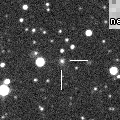
|
Now it is 15.4 mag (Feb. 21, Taras Prystavski). In the Northern Hemisphere, it keeps 15-16 mag and observable in excellent condition for a long time until early summer in 2015. It locates somewhat low in the Southern Hemisphere.
Date(TT) R.A. (2000) Decl. Delta r Elong. m1 Best Time(A, h)
Mar. 14 13 23.29 34 50.6 2.961 3.769 139 15.6 2:00 (180, 20)
Mar. 21 13 18.25 34 44.7 2.969 3.792 140 15.7 1:27 (180, 20)
|
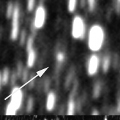
|
Now it is 16.7 mag (Sept. 23, Taras Prystavski). Distant object, but it keeps observable at 14 mag for a long time from 2015 to 2016.
Date(TT) R.A. (2000) Decl. Delta r Elong. m1 Best Time(A, h)
Mar. 14 20 48.79 -4 51.1 6.518 5.807 41 15.7 4:32 (264, 17)
Mar. 21 20 54.04 -4 28.0 6.421 5.781 46 15.7 4:38 (259, 22)
|
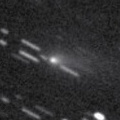
|
It brightened up to 2 mag by unusual major outburst in 2007. It brightened up to 12.6 mag in this apparition (June 25, Taras Prystavski). It faded down to 17-18 mag, but it suddenly brightened in outburst on Jan. 26, and brightened up to 13.2 mag (Jan. 29, Uwe Pilz). Then it is fading rapidly. It has already faded down to 17.2 mag (Feb. 27, A. Diepvens). In the Northern Hemisphere, it keeps observable in good condition. In the Southern Hemisphere, it keeps extremely low.
Date(TT) R.A. (2000) Decl. Delta r Elong. m1 Best Time(A, h)
Mar. 14 4 43.54 38 4.1 3.176 3.191 81 15.8 19:45 (151, 9)
Mar. 21 4 52.10 37 36.1 3.300 3.221 76 16.2 19:35 (150, 9)
|
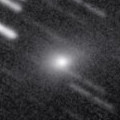
|
Now it is bright as 13.8 mag (Feb. 15, Jakub Cerny). It will be fading, and getting lower gradually after this. It locates somewhat low in the Southern Hemisphere.
Date(TT) R.A. (2000) Decl. Delta r Elong. m1 Best Time(A, h)
Mar. 14 6 31.92 20 12.8 2.090 2.531 104 15.9 19:45 (169, 34)
Mar. 21 6 37.98 19 48.1 2.184 2.540 99 16.1 19:35 (166, 34)
|
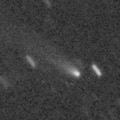
|
Now it is 15.3 mag (Feb. 23, Mitsunori Tsumura). It keeps observable in good condition after this in the Northern Hemisphere, but it will be fading gradually. It locates low in the Southern Hemisphere.
Date(TT) R.A. (2000) Decl. Delta r Elong. m1 Best Time(A, h)
Mar. 14 4 4.52 27 34.5 1.473 1.497 71 16.0 19:45 (139, 14)
Mar. 21 4 30.07 28 35.7 1.543 1.533 70 16.2 19:35 (141, 14)
|
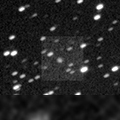
|
Now it is 14.9 mag (Mar. 1, Taras Prystavski). It will pass close to the earth from spring to summer in 2016, and it is expected to be observable at 6-7 mag in good condition. In the Northern Hemispehre, it keeps observable in good condition until 2015 spring when the comet will brighten up to 15.5 mag. In the Southern Hemisphere, it keeps low for a long time until 2016 spring.
Date(TT) R.A. (2000) Decl. Delta r Elong. m1 Best Time(A, h)
Mar. 14 4 46.79 34 21.0 5.068 5.026 81 16.0 19:45 (150, 13)
Mar. 21 4 45.44 34 6.3 5.128 4.961 74 16.0 19:35 (147, 11)
|
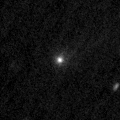
|
Now it is 16.2 mag (Feb. 23, Mitsunori Tsumura). It keeps observable in good condition after this, but it will be fading gradually.
Date(TT) R.A. (2000) Decl. Delta r Elong. m1 Best Time(A, h)
Mar. 14 12 7.90 9 38.6 1.327 2.311 169 16.1 0:45 (180, 45)
Mar. 21 12 2.98 10 22.0 1.351 2.338 169 16.2 0:12 (180, 45)
|

|
Now it is 15.8 mag (Jan. 11, Y. Sugiyama). It keeps observable at 15-16 mag for a long time from 2015 to 2016. In the Northern Hemisphere, it is observable in excellent condition. It locates somewhat low in the Southern Hemisphere.
Date(TT) R.A. (2000) Decl. Delta r Elong. m1 Best Time(A, h)
Mar. 14 3 3.73 32 8.8 5.832 5.416 60 16.2 19:45 (132, 1)
Mar. 21 3 7.07 32 46.4 5.911 5.401 54 16.2 19:35 (130, -1)
|

|
Now it is 17.6 mag (Feb. 23, Mitsunori Tsumura). It will brighten up to 13 mag in 2016. In the Northern Hemisphere, it will be observable in excellent condition in this winter. It locates somewhat low in the Southern Hemisphere. It is fainter than this ephemeris recently.
Date(TT) R.A. (2000) Decl. Delta r Elong. m1 Best Time(A, h)
Mar. 14 5 49.18 27 21.4 2.692 2.945 94 16.3 19:45 (160, 25)
Mar. 21 5 54.14 27 14.5 2.764 2.920 88 16.2 19:35 (157, 24)
|
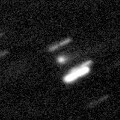
|
Now it is 16.1 mag (Feb. 22, Taras Prystavski). It keeps observable at 16-17 mag in good condition for a while.
Date(TT) R.A. (2000) Decl. Delta r Elong. m1 Best Time(A, h)
Mar. 14 7 52.58 14 0.2 3.492 4.135 124 16.6 20:26 (180, 41)
Mar. 21 7 53.05 14 5.2 3.586 4.141 117 16.7 19:59 (180, 41)
|
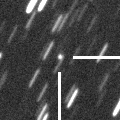
|
Brightened rapidly. Now it is bright as 15.6 mag (Feb. 12, Catalina Sky Survey). It is observable in excellent condition in the Northern Hemisphere. But it will be fading after this, and will be fainter than 18 mag in May. It is not observable in the Southern Hemisphere.
Date(TT) R.A. (2000) Decl. Delta r Elong. m1 Best Time(A, h)
Mar. 14 6 18.51 54 21.0 1.525 1.944 98 16.6 19:45 (173, 0)
Mar. 21 6 37.96 53 40.5 1.604 1.971 95 16.8 19:35 (173, 1)
|
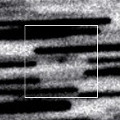
|
Now it is 19.2 mag (Feb. 21, Jean-Francois Soulier). It is expected to brighten up to 15 mag in summer, and will be observable in excellent condition. But it is fainter than this ephemeris.
Date(TT) R.A. (2000) Decl. Delta r Elong. m1 Best Time(A, h)
Mar. 14 19 49.02 -18 40.1 2.180 1.842 57 16.9 4:32 (268, 36)
Mar. 21 20 7.56 -17 42.7 2.109 1.821 59 16.6 4:38 (265, 39)
|
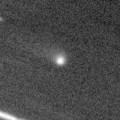
|
Now it is 16.1 mag (Feb. 15, Taras Prystavski). It keeps 17-18 mag for a long time from 2014 to 2016.
Date(TT) R.A. (2000) Decl. Delta r Elong. m1 Best Time(A, h)
Mar. 14 12 11.44 -23 35.9 4.457 5.355 152 16.7 0:48 (180, 79)
Mar. 21 12 1.13 -23 10.8 4.430 5.360 156 16.7 0:11 (180, 78)
|
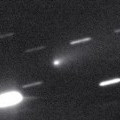
|
Now it is 14.4 mag (Feb. 15, Taras Prystavski). It keeps observable for a long time after this while the comet will be fading gradually.
Date(TT) R.A. (2000) Decl. Delta r Elong. m1 Best Time(A, h)
Mar. 14 9 10.13 6 4.0 2.159 3.020 144 16.8 21:43 (180, 49)
Mar. 21 9 8.19 6 42.8 2.259 3.061 136 16.9 21:14 (180, 48)
|

|
It brightened up to 6.5 mag in September (Sept. 21, Marco Goiato). Now it is fading rapidly. It has already faded, fainter than 17.7 mag (Feb. 15, Taras Prystavski).
Date(TT) R.A. (2000) Decl. Delta r Elong. m1 Best Time(A, h)
Mar. 14 15 1.32 18 12.2 2.125 2.837 126 16.8 3:38 (180, 37)
Mar. 21 14 45.99 20 40.2 2.140 2.925 134 17.0 2:55 (180, 34)
|

|
Now it is 16.3 mag (Feb. 27, E. Bryssinck). It keeps 13 mag for a long time from 2015 to 2016, and will be observable in excellent condition in the Northern Hemisphere. In the Southern Hemisphere, it is observable only until mid 2015 March.
Date(TT) R.A. (2000) Decl. Delta r Elong. m1 Best Time(A, h)
Mar. 14 3 41.87 25 23.2 4.787 4.481 66 16.9 19:45 (133, 12)
Mar. 21 3 43.86 26 6.3 4.843 4.430 59 16.9 19:35 (131, 9)
|
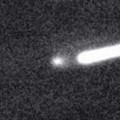
|
It brightened up to 15.5 mag from autumn to winter (Nov. 25, Taras Prystavski). Now it is fading. It has already faded down to 16.6 mag (Feb. 15, Taras Prystavski). It keeps observable in good condition for a while.
Date(TT) R.A. (2000) Decl. Delta r Elong. m1 Best Time(A, h)
Mar. 14 17 32.47 -10 34.4 1.923 2.162 89 16.9 4:32 (228, 57)
Mar. 21 17 40.43 -10 16.0 1.880 2.198 94 17.0 4:38 (217, 61)
|

|
Now it is 17.7 mag (Feb. 17, K. Hills). It keeps observable at 17 mag from spring to summer. It locates somewhat low in the Northern Hemisphere.
Date(TT) R.A. (2000) Decl. Delta r Elong. m1 Best Time(A, h)
Mar. 14 17 4.59 -28 59.2 2.894 3.141 95 17.3 4:32 (252, 74)
Mar. 21 17 9.79 -29 3.4 2.800 3.143 100 17.2 4:38 (238, 80)
|

|
Now it is 17.7 mag (Jan. 20, Taras Prystavski). It was observed at 17 mag in 2014 summer. In the Northern Hemisphere, it is observable at 17.5 mag in excellent condition also in 2015. It is not observable in the Southern Hemisphere.
Date(TT) R.A. (2000) Decl. Delta r Elong. m1 Best Time(A, h)
Mar. 14 20 41.51 38 2.7 4.442 3.990 57 17.2 4:32 (229, -8)
Mar. 21 20 52.08 39 7.6 4.444 4.006 57 17.3 4:38 (225, -6)
|
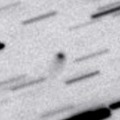
|
Now it is 18.0 mag (Feb. 27, W. Hasubick). It keeps observable at 17-18 mag for a long time from 2013 to 2016. It keeps locating high in the Northern Hemisphere. It keeps locating very low in the Southern Hemipshere.
Date(TT) R.A. (2000) Decl. Delta r Elong. m1 Best Time(A, h)
Mar. 14 17 21.32 56 18.5 6.467 6.612 94 17.3 4:32 (192, -3)
Mar. 21 17 17.24 57 43.2 6.449 6.622 95 17.3 4:38 (186, -3)
|
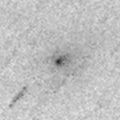
|
It brightened up to 15.4 mag in autumn (Nov. 19, Taras Prystavski). But it was extremely diffuse. It was reported so faint as 20 mag after December. It keeps observable in excellent condition in the Southern Hemisphere. But it locates low in the Northern Hemisphere.
Date(TT) R.A. (2000) Decl. Delta r Elong. m1 Best Time(A, h)
Mar. 14 8 22.43 -38 7.5 1.892 2.537 119 17.4 20:55 ( 0, 87)
Mar. 21 8 21.73 -37 23.8 1.980 2.594 117 17.6 20:27 ( 0, 88)
|

|
Now it is 17.5 mag (Feb. 19, W. Hasubick). It was observed around 17-18 mag in early 2014. It will be observable around 17-18 mag again from 2014 autumn to 2015 spring, in excellent condition in the Northern Hemisphere. It is not observable in the Southern Hemisphere.
Date(TT) R.A. (2000) Decl. Delta r Elong. m1 Best Time(A, h)
Mar. 14 10 4.18 55 18.0 4.596 5.224 124 17.5 22:37 (180, 0)
Mar. 21 9 59.69 54 28.9 4.661 5.235 120 17.5 22:05 (180, 1)
|
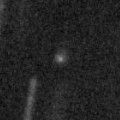
|
Now it is 17.7 mag (Feb. 24, K. Hills). It keeps observable at 17 mag from winter to spring. It is observable in excellent condition in the Southern Hemisphere. But it locates somewhat low in the Northern Hemisphere.
Date(TT) R.A. (2000) Decl. Delta r Elong. m1 Best Time(A, h)
Mar. 14 10 55.20 -28 44.7 2.206 3.088 147 17.6 23:27 (180, 84)
Mar. 21 10 45.02 -29 46.5 2.216 3.088 145 17.6 22:49 (180, 85)
|
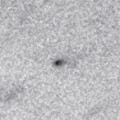
|
Now it is 17.6 mag (Jan. 21, Catalina Sky Survey). Now it is around the aphelion. In the Northern Hemisphere, it is observable at 18 mag in good condition from winter to spring. It locates somewhat low in the Southern Hemisphere.
Date(TT) R.A. (2000) Decl. Delta r Elong. m1 Best Time(A, h)
Mar. 14 8 32.78 29 19.3 3.859 4.557 129 17.6 21:06 (180, 26)
Mar. 21 8 30.87 29 14.7 3.935 4.547 122 17.7 20:37 (180, 26)
|

|
Now it is 18.6 mag (Feb. 16, K. Hills). It will brighten up to 14 mag and will be observable in good condition in 2016.
Date(TT) R.A. (2000) Decl. Delta r Elong. m1 Best Time(A, h)
Mar. 14 13 3.31 -0 37.2 2.964 3.901 157 17.7 1:40 (180, 56)
Mar. 21 12 59.84 -0 3.4 2.896 3.866 164 17.7 1:09 (180, 55)
|
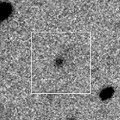
|
It will brighten up to 14 mag in 2016 spring. Now it is 16.9 mag (Feb. 19, W. Hasubick). In 2015, it is observable in good condition until spring in the Northern Hemisphere. In the Southern Hemisphere, it is not observable in 2015. But it will be observable in good condition at the high light in 2016.
Date(TT) R.A. (2000) Decl. Delta r Elong. m1 Best Time(A, h)
Mar. 14 7 15.18 39 11.9 3.545 4.013 111 17.8 19:49 (180, 16)
Mar. 21 7 15.51 38 42.8 3.584 3.957 104 17.7 19:35 (177, 16)
|

|
First return of a peculiar asteroid 1998 HO121. It keeps observable at 17-18 mag from 2015 to 2016.
Date(TT) R.A. (2000) Decl. Delta r Elong. m1 Best Time(A, h)
Mar. 14 6 56.33 10 36.8 2.613 3.108 110 17.8 19:45 (175, 44)
Mar. 21 6 59.78 11 7.0 2.686 3.095 104 17.8 19:35 (170, 43)
|

|
Now it is 17.8 mag (Feb. 25, A. Diepvens). It keeps observable after this while the comet will be getting brighter graudually. It will brighten up to 11 mag from autumn to winter. But it locates low at that time.
Date(TT) R.A. (2000) Decl. Delta r Elong. m1 Best Time(A, h)
Mar. 14 14 56.69 0 48.7 1.888 2.632 129 18.0 3:33 (180, 54)
Mar. 21 14 56.69 1 36.1 1.783 2.590 135 17.8 3:05 (180, 53)
|

|
Now it is 16.6 mag (Feb. 20, Yasukazu Ikari). It keeps 18 mag from 2014 to 2015. In 2015, it keeps observable in good condition from winter to spring.
Date(TT) R.A. (2000) Decl. Delta r Elong. m1 Best Time(A, h)
Mar. 14 10 36.63 -10 59.3 5.068 6.013 160 17.8 23:09 (180, 66)
Mar. 21 10 33.71 -10 59.1 5.101 6.025 156 17.8 22:39 (180, 66)
|
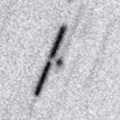
|
Now it is 17.7 mag (Feb. 14, Ken-ichi Kadota). It keeps observable at 18 mag from 2014 to 2015 in the Northern Hemispehre. It is not observable in the Southern Hemispehre.
Date(TT) R.A. (2000) Decl. Delta r Elong. m1 Best Time(A, h)
Mar. 14 14 56.15 67 33.2 3.961 4.353 106 17.9 3:32 (180,-12)
Mar. 21 14 35.60 69 45.7 3.985 4.361 105 17.9 2:44 (180,-15)
|
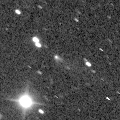
|
Now it is 18.3 mag (Feb. 12, D. Buczynski). It was observed at 17 mag from 2013 to early 2014. It will be observable at 17.5 mag in good condition again from autumn to winter in 2014.
Date(TT) R.A. (2000) Decl. Delta r Elong. m1 Best Time(A, h)
Mar. 14 7 56.35 14 41.7 2.833 3.501 125 17.9 20:30 (180, 40)
Mar. 21 7 56.79 14 48.6 2.934 3.517 118 18.0 20:03 (180, 40)
|
|
![]()
 269P/2012 R2 ( Jedicke )
269P/2012 R2 ( Jedicke ) P/2014 X1 ( Elenin )
P/2014 X1 ( Elenin ) 57P/du Toit-Neujmin-Delporte
57P/du Toit-Neujmin-Delporte C/2013 G9 ( Tenagra )
C/2013 G9 ( Tenagra ) 4P/Faye
4P/Faye C/2013 V5 ( Oukaimeden )
C/2013 V5 ( Oukaimeden ) C/2014 W2 ( PanSTARRS )
C/2014 W2 ( PanSTARRS ) 40P/Vaisala 1
40P/Vaisala 1 299P/2014 D2 ( Catalina-PanSTARRS )
299P/2014 D2 ( Catalina-PanSTARRS ) C/2013 G3 ( PanSTARRS )
C/2013 G3 ( PanSTARRS ) C/2012 K8 ( Lemmon )
C/2012 K8 ( Lemmon ) C/2014 R4 ( Gibbs )
C/2014 R4 ( Gibbs ) C/2013 U2 ( Holvorcem )
C/2013 U2 ( Holvorcem ) C/2014 W6 ( Catalina )
C/2014 W6 ( Catalina ) 65P/Gunn
65P/Gunn 53P/Van Biesbroeck
53P/Van Biesbroeck C/2014 Y1 ( PanSTARRS )
C/2014 Y1 ( PanSTARRS ) (347449) 2012 TW236
(347449) 2012 TW236 10P/Tempel 2
10P/Tempel 2 C/2013 TW5 ( Spacewatch )
C/2013 TW5 ( Spacewatch ) C/2014 F2 ( Tenagra )
C/2014 F2 ( Tenagra ) 119P/Parker-Hartley
119P/Parker-Hartley![]()






















































